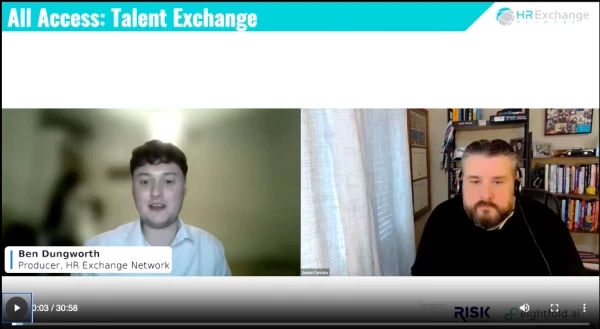Ghosting Prevention and Retention
Add bookmarkIt’s not uncommon for things happening outside the workplace to impact things happening in the workplace, and this happens whether for good or for ill. One of those occurrences is ghosting.
Ghosting Defined
What is ghosting? Basically, it’s when a candidate or new hire will suddenly and without explanation end all communication with a prospective or new employer. This includes not showing up for scheduled interviews, accepting an offer but not arriving for the first day of employment, and disappearing from a current job without notification.
One question many HR professionals have is why is ghosting suddenly “a thing?” Contributing factors include the tight job market, the labor shortage, and even the way in which many workers prefer to communicate these days – via email or text. In reality, it’s very hard to ghost someone when that person or company representative is staring you in the face.
And there’s evidence this is on the rise.
According to Robert Half, 28% of workers have backed out of a job after accepting the offer. Among the reasons given for ghosting an employer:
- Received a better offer from another company
- Received a convincing counteroffer from current employer
- Heard bad things about the company after accepting
In addition, Half points out a handful of cities where ghosting appears to happen more often.
- San Diego
- San Francisco
- Chicago/Houston (tied)
- Austin
- Miami
This makes sense when you accept the premise ghosting seems to be having an impact on industries that employ large amounts of workers being paid hourly. It also seems to impact a high number of white collar-level businesses. Those include health care and technology companies.
Ghosting Prevention
So how do employers try to limit or prevent ghosting?
One way to do that is through video technology.
Digi-Me’s latest whitepaper, How Video Helps Prevent Ghosting for Recruitment Professionals, discusses how the technology prevents ghosting through better communication and candidate relationship building. Download the whitepaper here.
Another way to prevent ghosting is the counteroffer strategy. In the current labor shortage climate, HR and recruiters must always be prepared for a ghosting situation. The strategy should include a conversation with the new hire that focuses on ways to deal with counteroffers form their current employer. It may also be beneficial to help the employee prepare his or her resignation specifically discussing what it should look like and feel like in terms of content.
Discuss the onboarding experience with the new hire. This is the opportunity HR or the recruiter has to get the person excited about coming to work at the company. By providing the onboarding information up front, it helps the new hire get comfortable with his or her decision to accept the offer.
RELATED: Onboarding Success in 4 Steps
Another related strategy deals with pre-boarding. It’s important not to disconnect from the new hire. Make sure to stay in constant contact. For HR professionals or recruiters, losing this connection can very easily transition to a ghosting situation. During this time, it’s important to continue to discuss the company culture and to make them feel welcomed long before they walk in the door on their first day.
Communication is Key
The most important part of the overall strategy is communication. Companies have to be transparent with their new hires and they have to cherish the connection made during the process. Ghosting prevention starts there. Is this going to prevent ghosting all around? The answer is simply no, but it can help deter a new hire from considering the action. And it goes a long way to retaining that worker down the line.
Photo courtesy: Stock Photo Secrets
























